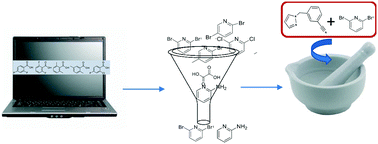Systematic investigation of hydrogen-bond propensities for informing co-crystal design and assembly†
Abstract
Co-crystallizations can be utilized for generating new solid forms of a target substance in order to alter or enhance some specific bulk physical property. Generally, selection of the co-former (the necessary partner for the target molecule) is based on existing structural information about molecular recognition events involving complementary functional groups, and extensive experimental screening methods. In this study, we utilize structure-informatics in an attempt to predict if two different molecules will form a co-crystal or not. Our study is based on hydrogen-bond propensity (HBP), and the key premise of our approach rests on whether target–co-former interactions are more likely to take place than either target–target or co-former–co-former hydrogen bonds. We examined six different target molecules in combination with 25 possible co-formers each and used the HBP protocol for predicting if a co-crystal would form or not. The predictions were then compared with results from an experimental co-crystal screen of the 150 different combinations. The correct outcome was successfully predicted 92–95% of the time which shows that for this series of small molecules, HBP is a very reliable indicator for determining if a co-crystal will form between a target molecule and a particular co-former.

- This article is part of the themed collections: Introducing the CrystEngComm Advisory Board and their research and 1st International Conference on Noncovalent Interactions


 Please wait while we load your content...
Please wait while we load your content...